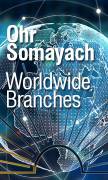5785: The Rarest Year of Them All Part XII - La"G B'Omer on Erev Shabbos
As detailed in previous installments in our series, our current year, 5785, is not only a rare one, but calendarically speaking, actually the hands-down rarest of them all.5785 is classified as aHaSh”A year in our calendars. This abbreviation is referring to Rosh Hashana falling out on Thursday (hei), both months of Cheshvan and Kislev being shalem (shin - 30 day months instead of possibly 29; these are the only months that can switch off in our set calendar), and Pesach falling out on Sunday (aleph).
A HaSh”A year is the rarest of years, and out of the 14 possibilitiesin Tur’s 247-year calendar cycle, this year type occurs on average only once in about 30.19 years (approximately 3.3 percent of the time). Indeed, at times there are 71 years (!) in between HaSh”A years. The last time this year type occurred was 31 years ago in 5754/1994. The next time will be 20 years hence in 5805/2044. The next several times after that are slated to be 27 years further, in 5832/2071 and then a 51 year gap in 5883/2122.
The reasons and rules governing the whys and whens this transpires are too complicated for this discussion; suffice to say that when the Mishnah Berurah discusses these issues he writes “ain kan makom l’ha’arich,” that thisis not the place to expound in detail, which is certainly good enough for this author.
Obviously, such a rare calendar year will contain many rare occurrences. This series sets out to detail many of them. Let’s continue on our journey through our unique year.
As discussed in a previous article in this series, this year hosted a rare andjoyous Yerushalayim Purim Meshulash as well as the complicated Erev Pesach Shechal B’Shabbos. Although these are rare phenomena that always occurs in a HaSh”A year, they can also occur in other year combinations as well. In fact, over the entire twentieth century they occurred eleven times, or eleven percent of the time. This was the fifth occurrence in the twenty-first century. Whenever these occur, another interesting halacha applies. But first some backround is in order.
Sefirah Restrictions
The Gemara Yevamos (62b) famously and tragically details the deaths of 24,000 students of Rabbi Akiva during the time period between Pesach and Shavuos, all for not according each other proper honor. Although there are many different rationales given by the commentaries to explain this catastrophe, the Tashbetz (Shu”t vol. 1:178) elucidates that the reason they were punished so severely for a seemingly minor infraction is that their not treating each other properly ended up engendering a tremendous Chilul Hashem. In fact, according to several authorities, the reason why Lag B’Omer is a day of celebration is that it is the day when Rabbi Akiva started teaching his five new students (including Rabbi Shimon bar Yochai), allowing the Torah’s mesorah to perpetuate;a feat that was previously in jeopardy after the deaths of his talmidim.
This calamity is actually the basis of the annual Sefirah restrictions, which include not getting married or taking a haircut. Yet, that does not properly explain the different and varied minhagim that Klal Yisrael keeps regarding the actual time frames of these restrictions.
And there are different minhagim. In fact, Rav Moshe Feinstein lists six different customs, and that is not including the Arizal’s minhag. Yet, practically, the Pri Megadim and Mishnah Berurah break it down to three main disparate customs. The others are variations on those main opinions.
Minhag # 1 -Sefardic Sefirah
The Shulchan Aruch (O.C. 493:2) writes that one should not get married between Pesach and Shavuos until Lag B’Omer; likewise regarding haircuts, as at that time the Talmidim of Rabbi Akiva stopped dying. Therefore, these restrictions are permitted starting from the next day - Lad B’Omer.
Minhag# 2 - LaG not LaD
However, the Rema (ad loc.) argues, stating that the Ashkenazic minhag is to allow these activities from Lag B’Omer itself, and not necessitate waiting until the next day. The reason for the allowance a day earlier than the Shulchan Aruch mandates is either due to the dictum of Miktzas Hayom K’kulo, that part of a day is considered like a full day, or that he held that the Talmidim stopped dying by / on Lag B’Omer and not Lad B’Omer. Additionally, the Rema is following early Ashkenazic authorities such as the Maharil, Mahari Weil, and the Sefer Haminhagim of Rav Yitzchak Isaac Tyrnau (Tirna), all of whom allowed haircuts and celebrations on Lag B’Omer itself.
Minhag# 3 - Second Sefirah
The Rema then mentions another popular minhag, to only start the Sefirah restrictions from Rosh Chodesh Iyar, and not from right after Pesach. This Sefirah lasts until shortly before Shavuos, excluding Lag B’Omer itself. This has come to be known colloquially as ‘Second Sefirah.’
But why such disparate Sefirahs? If we are all keeping the same prohibitions for the same reason, how can there be so many different minhagim in its practical application?
Halftime Respite
It turns out that there are two main different rationales expressed by the Rishonim as to when the Sefirah restrictions should actually apply. The first, mentioned as a ‘Midrash’ by R’ Yehoshua ibn Shu’aib and an ‘old Sefardi Sefer’ by the Baal Hamaor and Tashbetz, is that Rabbi Akiva’s Talmidim stopped dying by ‘Parus HaAtzeres’ or the halfway point before Shavuos. Since the Gemara states that we should start to learn the halachos of a Yom Tov 30 days prior to its commencement, which would mean that 15 days before a holiday would be its ‘midpoint,’ this would squarely place the ‘Parus’ on Lad B’Omer (49-15=34). According to this, the Talmidim stopped dying on Lad B’Omer and therefore all Sefirah restrictions cease on this day as well. As mentioned previously, the Shulchan Aruch states that he follows this opinion, and therefore he rules that from Lad B’Omer, haircuts and weddings are permitted. This is the common Sefardic minhag.
33 Days
However, there is another opinion, attributed to the Baalei Tosafos. They maintain that in actuality the talmidim died throughout the entire time period from Pesach to Shavuos. Yet, they did not die on days when Tachanun was not said, including all days of Pesach, the Shabbosos in between, and Rosh Chodesh. This adds up to 16 days. Meaning, of the entire 49 day period, they died on 33 of those days. Therefore, as a siman to show that they died for 33 of these days, Lag B’Omer, the 33rd day of the Sefirah, was chosen as a day of easing restrictions. This is why the Ashkenazic minhag is to allow haircuts on Lag B’Omer itself, and not need to wait for Lad B’Omer.
Lag B’Omeron Friday
Yet, this year, 5785, Lad B’Omer fell out on Shabbos, as it would any year that that has a Purim Meshulash and Erev Pesach Shechal B’Shabbos. That would mean that, as opposed to Ashkenazim who may get a haircut on a Friday Lag B’Omer L’kavod Shabbos, Sefardim would need to wait until Motzai Shabbos to ease the Sefirah restrictions. However, getting a haircut only after Shabbos would seem an affront to the honor of Shabbos. Hence, the Shulchan Aruch, citing the Tashbetz, adds an exception to the rule: In an uncommon year such as ours, when Lag B’Omer falls out on Erev Shabbos, Sefardim as well can get a haircut on Lag B’Omer – L’Kavod Shabbos.
The reason is that just as an Avel (mourner) within the thirty day Shloshim period after a relative’s passing may otherwise not get a haircut, yet may nonetheless do so on Erev Yom Tov - L’Kavod Yom Tov, the same halachic rational applies here – on Lag B’Omer L’Kavod Shabbos. Since the Sefirah restrictions are based on those of mourners, similar leniencies are applicable. So it turns out that practically speaking, whether one is Sefardic or Ashkenazic, in our rare year one was able to get a haircut L’Kavod Shabbos on Lag B’Omer itself. Several Poskim add that as the leniency is due to Kavod Shabbos, in extenuating circumstances one may even get his hair cut on Thursday night if necessary L’Kavod Shabbos, as it is already Lag B’Omer; even though in a regular year the haircutting hetter only starts from the daytime itself of either Lag or Lad B’Omer, respectively. This interesting incidence of Lag B’Omer on Friday, will next occur in twenty years hence, in 2045/5805.
Although a haircutting allowance a day early may not be the world’s most noteworthy occasion, nonetheless, in this author’s mind, it is quite fascinating that this specifically occurred in our exceptional year.
Our fascinating journey detailing the many remarkable facets of our rare year will iy”H be continued…
Rav Samson Raphael Hirsch famously wrote that “the Jew’s catechism is his calendar.” It is this author’s wish that by showcasing the uniqueness of our calendar year and its rare minhagim, this article will help raise appreciation of them and our fascinating calendarical customs.
This author wishes to thank R’ Yosef Yehuda Weber, author of ‘Understanding the Jewish Calendar,’ for being a fount of calendarical knowledge and for his assistance with this series.
Disclaimer: This is not a comprehensive guide, rather a brief summary to raise awareness of the issues. In any real case one should ask a competent Halachic authority.
L'iluy Nishmas the Rosh HaYeshiva - Rav Chonoh Menachem Mendel ben R' Yechezkel Shraga, Rav Yaakov Yeshaya ben R' Boruch Yehuda.






